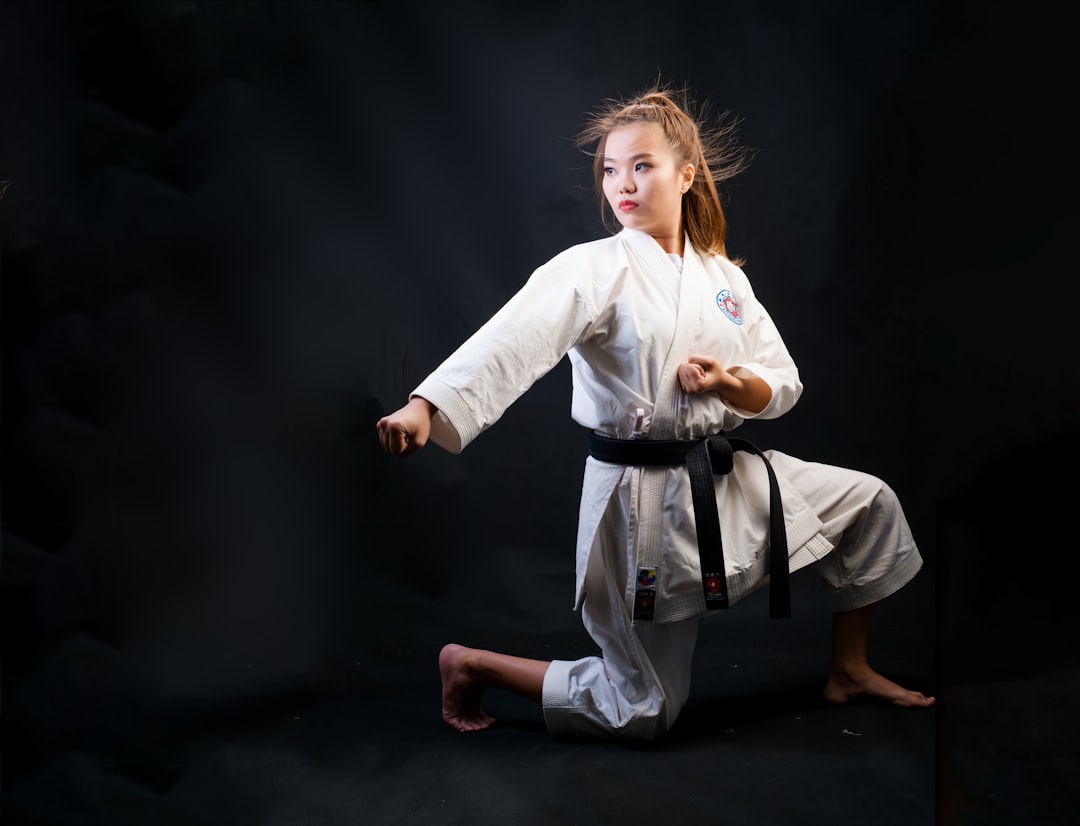When practicing karate, it's crucial to wear a well-fitting gi that honors tradition while optimizing performance. This traditional karate uniform should be made from high-quality, breathable lightweight cotton for comfort and mobility during techniques. For safety, especially in sparring, additional protective gear like hand pads, shin guards, and a gum shield are indispensable to prevent injuries. These items should be chosen for their material quality, fit, and protection level. Whether you're a novice or an expert, your gi must adhere to the specific color and design requirements of your dojo or karate style, maintaining both functional and traditional standards. Safety and respect are paramount in karate, and your choice of attire plays a significant role in both aspects of the discipline.
Embarking on a journey in karate requires more than just dedication and discipline; it demands the right equipment to support your practice effectively. This comprehensive guide delves into the essential karate gear every practitioner needs to get started, ensuring both comfort and safety during training. From selecting the perfect karate uniform to understanding the importance of protective gear for sparring, this article will outfit you with the knowledge necessary to make informed decisions about your karate attire and accessories. We’ll explore the key features of karate uniforms, the fundamental protective equipment that safeguards your training sessions, and advanced tools and accessories that can enhance your technique. Whether you’re a beginner or an experienced practitioner, this guide will help you navigate the best options in karate gear to optimize your training experience.
- Essential Karate Gear: The Comprehensive Guide to Getting Started
- 1. Karate Uniforms: Key Features and Styles for Practitioners
- 2. Fundamental Protective Equipment for Safe Training
Essential Karate Gear: The Comprehensive Guide to Getting Started

Beginning your journey in karate requires a solid foundation of equipment to ensure proper training and safety. A fundamental piece of gear is the karate uniform, also known as a gi. This traditional garment not only promotes proper technique by restricting excess fabric but also signifies respect for the discipline. The gi typically consists of a jacket, trousers, and a belt, with the color often indicating the wearer’s rank or level of proficiency. Are you curious about the specific types of karate uniforms available? There are various styles and materials to choose from, including cotton and canvas options that offer durability and comfort during practice.
In addition to the gi, safety equipment is crucial for both beginners and experienced practitioners. Protective gear such as hand pads, shin guards, and gum shields safeguard against injury and allow you to train with confidence. Hand pads are particularly important in karate as they absorb impact during strikes, while shin guards protect the legs from kicks. Gum shields, essential for sparring, ensure oral health by cushioning the teeth and gums. When selecting your protective gear, consider the materials and fit to ensure maximum protection and comfort. Quality equipment can make a significant difference in both your practice and overall experience in karate.
1. Karate Uniforms: Key Features and Styles for Practitioners

Karate practitioners, whether beginners or advanced, require a proper karate uniform that not only facilitates their movements but also adheres to the traditions and standards of the martial art. A karate uniform, commonly known as a gi, is an essential piece of equipment for any karateka. The gi typically consists of a jacket, trousers, and a belt, with variations in design and material that cater to different styles of karate such as Shotokan, Goju-Ryu, or Wado-Ryu. When selecting a gi, it’s important to consider the fabric; lightweight cotton is preferred for its breathability and durability. Are the sleeves and pants tapered enough to allow full range of motion while performing techniques? Does the belt secure comfortably around the waist without restricting movement? A well-fitted karate uniform should answer these questions affirmatively, ensuring that the practitioner’s focus remains on perfecting their form and technique rather than on their attire. The traditional white gi is universal across styles, but some dojos may have specific color requirements or allow for limited variations in design, such as different collar styles or lapel types. It’s always best to consult with your sensei or the governing body of your karate style to ensure that your chosen uniform adheres to the appropriate standards for your practice.
2. Fundamental Protective Equipment for Safe Training

When practicing karate, safety should be a top priority, especially when engaging in contact-based drills or sparring. A fundamental piece of protective equipment for any karateka is a well-fitted karate uniform, also known as a gi. The gi not only facilitates movement but also ensures modesty during practice, which is essential in a martial arts discipline. It is made of cotton or a blend that provides both comfort and durability. Does thegi offer significant protective benefits? While it primarily serves to cover the practitioner, it can help cushion minor impacts and abrasions that occur during training. Additionally, for impact absorption and protection during sparring, a karateka should invest in appropriate protective gear such as hand pads, footpads, shin guards, and a gum shield, which are essential to safeguard against injuries. Are these additional protections mandatory for all karate practitioners? While the intensity of protective equipment may vary with the level of sparring and the particular style of karate being practiced, it is generally advisable for all practitioners to use such gear during contact exercises to ensure their safety and well-being while honing their skills.
In wrapping up our exploration of the necessary equipment for engaging in karate, it’s clear that both the choice of attire and protective gear play pivotal roles in ensuring a practitioner is prepared for the rigors of this martial art. A karate uniform, specifically tailored to facilitate movement and durability, stands as the cornerstone of any karateka’s wardrobe. Complementing this with fundamental protective equipment safeguards one’s training partner and self from potential injuries. Whether you are a novice or an experienced martial artist, equipping yourself with the right gear is essential for both performance and safety. With the insights provided on karate uniforms and protective essentials, you are now well-equipped to embark on your karate journey confidently and with the proper equipment at the ready.
